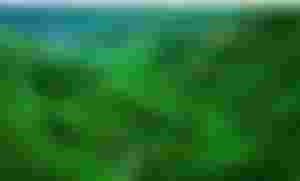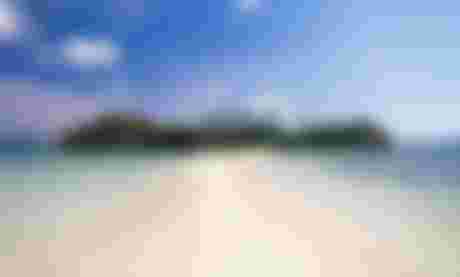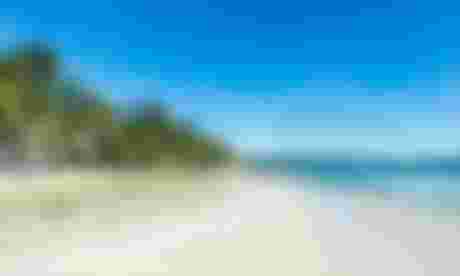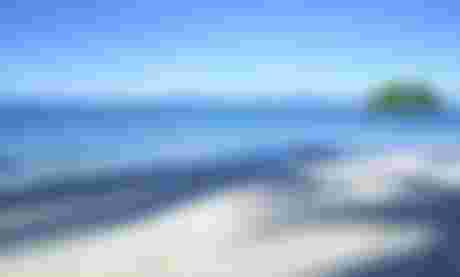The Philippines: A Guide to the Best Islands
For a country with a lot of beautiful islands and world-class surfing and diving, the Philippines isn't very well known.
A group of people who work for the tourist board and tour operators say that the country is not only safe, but that it needs tourists to help the economy. People who go will get a very warm welcome. There are more than 7,000 islands to choose from, but how do you decide which one to go to? Each of these 10 islands has something unique to offer. This is our guide.
Take a break in El Nido, Palawan, and enjoy the sun.

Before the Spanish came, this jungle beach town on the northern tip of Palawan didn't change much. It has been compared to Alex Garland's book, The Beach; he called it "The Beach." If you want to see many of the islands in the Bacuit archipelago near you, you can go on a boat-hopping tour. The water is so clear that you can even see fish swimming in between coral at 15 meters down. The cost of a tour usually costs between £17 and £20 per person per day, and that usually includes lunch as well. There is grilled seafood all over the island.
Typhoon Haiyan was one of the storms that hit the island of Palawan. Only the city of Coron and the nearby island communities were hit, though. El Nido hasn't been damaged, and the coral reefs around it haven't been harmed except for a few very shallow ones.
The second thing you should do is shake your tail feather in Boracay.

For people who want to party, Boracay is the place to go. There are endless beaches of powdery-white sand, long happy hours, a wide range of restaurants and hotels, and a lot of water sports.
It has 12 beaches, the most popular of which are White Beach and Bulabog, which are both on the coast. The island is broken up into "boat stations," which are used as a way to find your way around. Station One in the north is known for its high-end resorts and peace and quiet. Station two is the busiest, and station three is where all the cheap places to stay are. In the 70s, many people in the area looked back on the good old days when there were no hotels or restaurants. Boracay, on the other hand, is still very much a Phuket in its early stages.
A storm hit the island. Many parts of the island still don't have electricity. Most hotels have generators to keep them running.
Check out a UNESCO World Heritage site in Banaue, North Luzon, which is a beautiful place to visit.

North Luzon, the largest island in the Philippines, is a land of misty mountains, where pine trees grow instead of palm trees and pine cones grow in their place. There are 2,000-year-old rice terraces in Banaue and Batad. You can see them by going there. The UNESCO-listed terraces still provide a source of income for the different tribes that still live in the mountains. There is a tourist information center in Banaue that can help you plan trips to different villages and waterfalls through the rice terraces. Expect to pay about £10 for a whole day with a guide.
In Bohol, you can find people who aren't afraid to be different.

Bohol is a small island just off the coast of Cebu. It's best known for its "chocolate hills," which are more than 1,500 mounds made of coral deposits that have been shaped over a million years by erosion. If it's summer, they'll be green or brown. The world's smallest monkey, the camera-shy tarsier, lives on the island. Visit them in their safe place at the Philippines Tarsier Foundation. Do not go to see them in the cages by the river; they are mistreated and don't live long there. This is a bad idea. For around £35 with a car, guide, and lunch, you can hire a motorbike or book a tour from a local company.
The fifth thing to do in Siargao is go surfing.
Siargao is one of the best places in the Philippines to surf. It is on the coast of the Pacific Ocean, north of the island of Mindanao. Surfers from all over the world come to the town to surf the Cloud 9 reef break on the island. There are a lot of international surfing competitions held in the small beach town. This makes it very busy during the summer, but completely empty when the waves aren't. It costs about £7 an hour to hire a trainer, who you can find on the beach. You can also book a package from a surf hotel, like Kermit Surf Resort, which has a package for £394 a week, which includes accommodation and one-on-one surf lessons.
When you go to Camiguin Island, don't stay on the main road.

This volcanic island, which looks like a pear, is near the northern tip of Mindanao, but many people don't go there because there have been a lot of Islamist uprisings there. People who go to Camiguin, on the other hand, haven't had any problems. They get to see an island that hasn't been touched by tourists. For a small island, this one packs a lot of punch. It has 29,187 hectares and seven volcanoes. Among the things you can do there are good dives through an eerie sunken cemetery and waterfalls, a lagoon, hot and cold springs, and a lot of different kinds of water. It's easy to get to all of these places on foot. You can also rent a motorbike for £11 per day with a driver, or £7 without one.
This is the last thing you should do before going witch hunting in Siguijor.

Siquijor is both feared and revered by the people who live there. In that case, this is where you should go. A list of "official healers" is kept by the Provincial Tourism Department, or you can just ask any local and they'll point you in the right direction. For about £14 for about half a day you'll need to rent a tricycle (a local motor taxi). Most of the healers live high in the mountains, so you'll need to rent one. These witch doctors or healers are open to paying visitors, but be polite and respectful because it is a long-standing tradition that many people in the area believe in and follow. It's also a great place to relax, snorkel, and dive away from all the magic.
Take a look at the misty mountains of Batanes.

The Batanes Islands are at the very north end of the Philippines archipelago. They are a land of gently sloping hills, thatched roof homes, and people who wear straw hats. Residents and tourists come to the islands to escape the tropical heat. The islands have a wet, rainy climate that is similar to what you'd see in a British summer.
Dive in Mindoro.

It's easy to find good dive spots in the Philippines. The best scuba spots can be a little more difficult to find, but they're worth it. There are a few. Apo Reef is one of them. A mostly sunken atoll, two hours off the west coast of Mindoro, the 40 sq km reef is famous among divers because it is home to a lot of bigger fish, like sharks, rays, and sea turtles. Most divers stay on Pandan Island, which is a 20-minute boat ride from Mindoro. From there, they take a three-hour boat ride to get to the reef. One of the closest dive shops to the reef is Apo Reef Club, which is called "Apo Reef Club."
In Davao, on the island of Mindanao, go hiking.

On the island of Mindanao, Davao is the largest city. This area isn't very popular with tourists because of the Islamist insurgencies. Davao City is known as a safe place to live on the island and has been named one of the best places to live in the country. This is where the world's smelliest fruit, the Durian, comes from. This is where it grows. One of the rarest birds in the world lives there (pay a visit to the Philippine Eagle Centre for an educational tour).
But the island's crown jewel is Mount Apo, the country's tallest peak and part of a volcano. There are 2,956 steps to get to the top, and you'll see all kinds of different kinds of plants and animals in the Philippines along the way.








